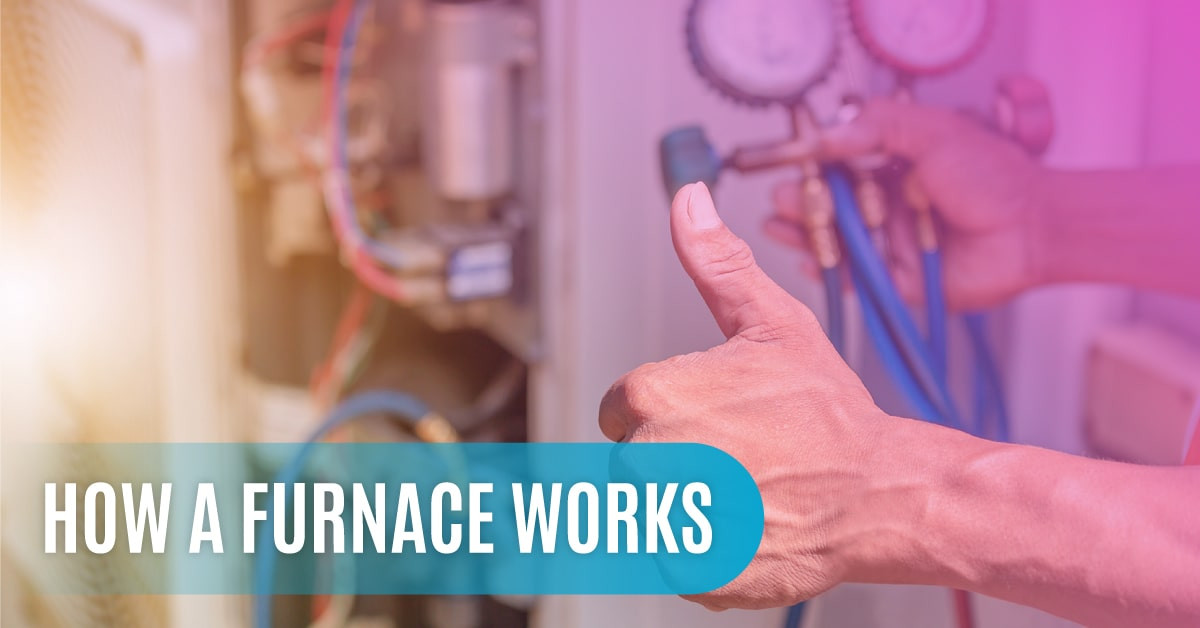How A Furnace Works
For many of us, our furnace is something we take for granted. The furnace is one of the most important pieces of equipment in your home during the winter. It's responsible for keeping you and your family warm and comfortable when the temperature outside drops. But how does a furnace actually work?
The furnace starts by taking air from the room and heating it up. Then, it blows the warm air into the ducts and sends it throughout your home. Finally, the cooled air is sucked back into the furnace and reheated. Pretty amazing, right?
We recently wrote a post on how a furnace works to help our customers/clients learn more about furnaces. Some of the topics that were covered were what a furnace does, what its components are, and how it works.
Furnace: The Home Heating Cycle
Furnaces have a sequence of operations. Recent technological advances have led to a change in the "standard" sequence of operations over the years. However, certain principles remain the same.
Here is a look at the usual sequence of operations for a furnace:
- A heating cycle will begin when your thermostat detects a difference between its settings and your home's temperature.
- The furnace's draft inducer fan starts and begins pulling air into the unit.
- The furnace's igniter starts heating up.
- Once the igniter reaches the proper temperature, it will ignite the gas in the burner assembly.
- The burning gas will create heat, which will be transferred to the heat exchanger.
- Warm air will begin flowing from the furnace and into your home's ductwork.
- The furnace will continue to operate until the thermostat is satisfied and sends a signal to shut off.
Furnace Parts & its Systems
A furnace has five main parts:
Burner
A furnace works by heating air and circulating it throughout your home. The furnace’s burner is fueled by either natural gas or propane.
The burners are where the gas or oil is burned. The burner consists of an igniter, a control valve, and a fuel nozzle. The igniter is what starts the burning process. The control valve regulates the amount of gas or oil that is burned. The fuel nozzle controls the flow of gas or oil to the burner.
Blower Motor
The blower motor circulates the air in your home. It is typically located in the furnace, near the bottom. The blower motor has a belt that connects it to the blower wheel. As the motor turns, the belt turns the wheel, which moves the air.
Heat Exchanger
It is the part of the furnace where the actual heating takes place. The heat exchanger is a series of metal coils that transfer the heat from the burning gas or oil to the air that is being blown into your home by the blower.
Combustion Chamber
The combustion chamber is the furnace area where fuel and air mix. All combustion requires oxygen. Your furnace has a vent system to “inhale” air to create clean and efficient combustion. This venting system is also where your furnace will “exhale” the combustion by-products.
Filter
The furnace filter is a screen that traps airborne contaminants, such as dust and pollen before they can enter the furnace. The filter helps to keep the furnace clean and prevents the build-up of dirt and debris on the furnace components. It is necessary to keep the filter clean so that it can do its job properly. A clogged one will lead the furnace to work harder and use more energy.
Furnaces are a staple of cold-weather life, and it's important to know how they work in order to maintain them. By understanding the basics of furnace operation, you'll be able to troubleshoot any problems that may arise and keep your home warm all winter long!
To learn more about furnaces and their work make sure to follow us on social media and check out our blog at https://lynnswinnipeg.ca/blog/, where we talk about how a furnace works, emergency furnace repairs, understanding different types of furnace & more.































